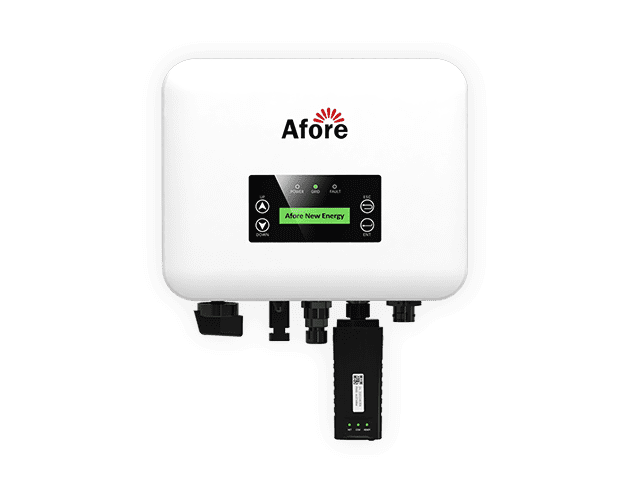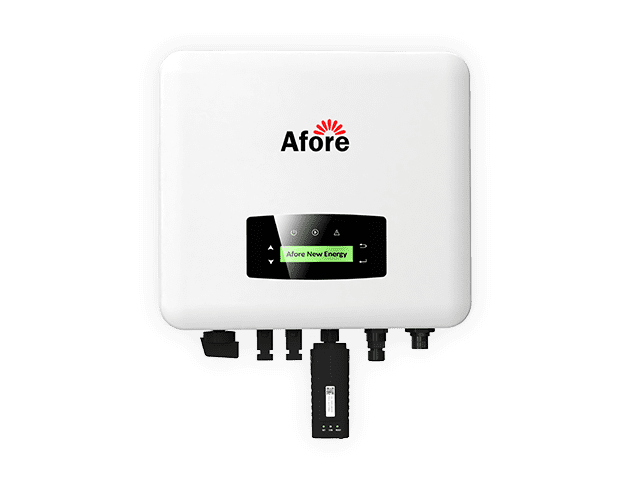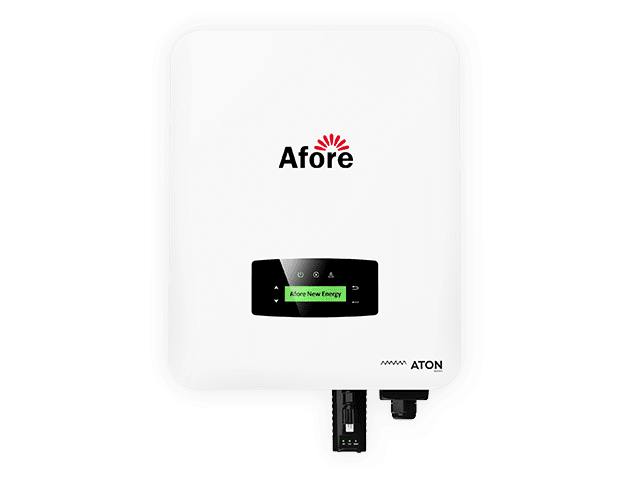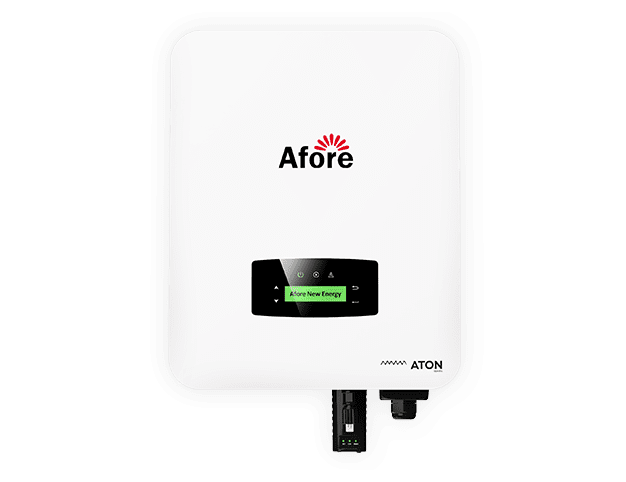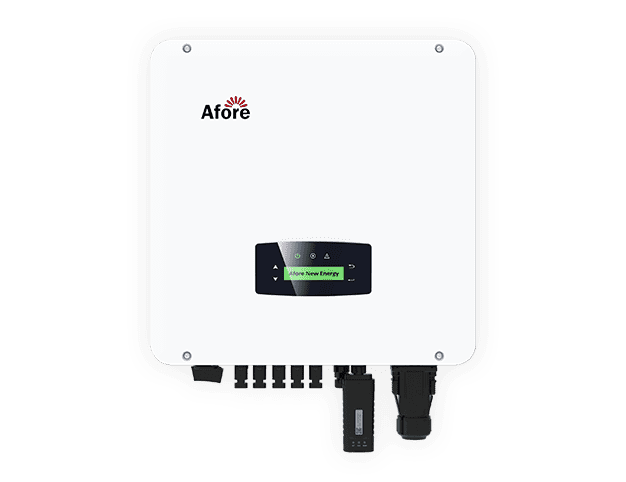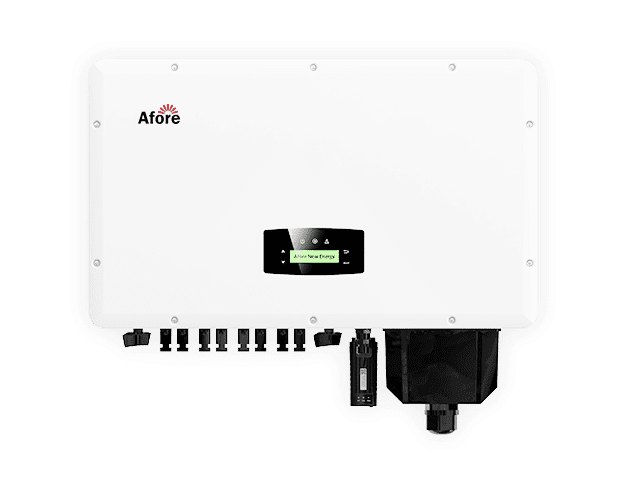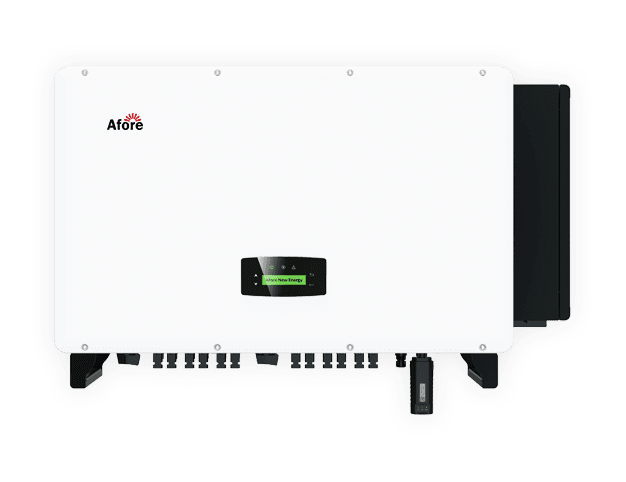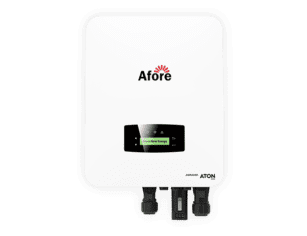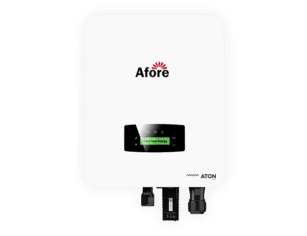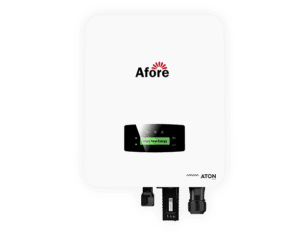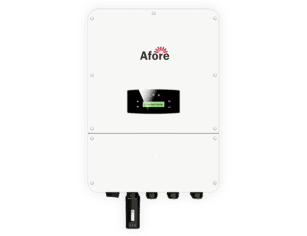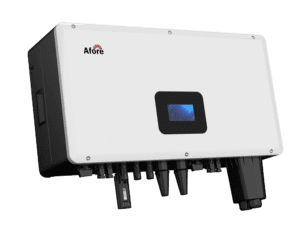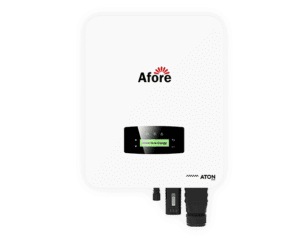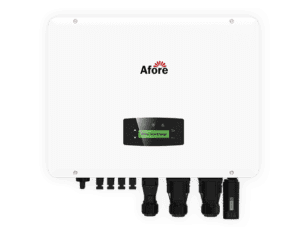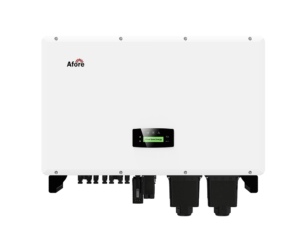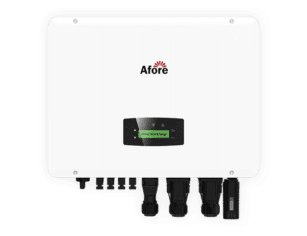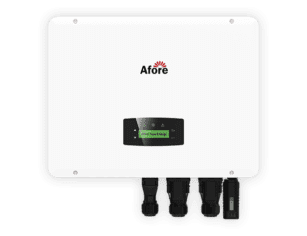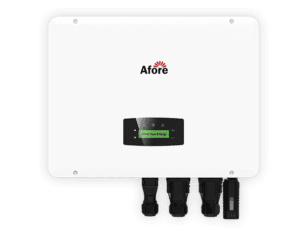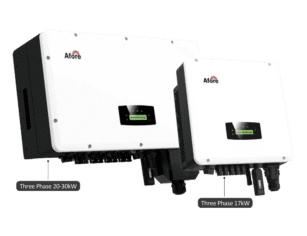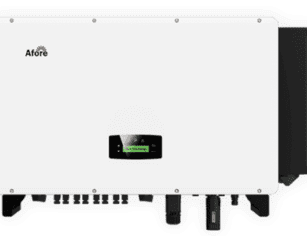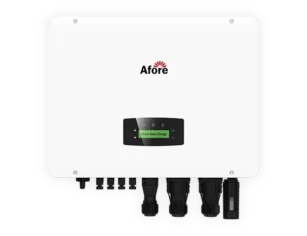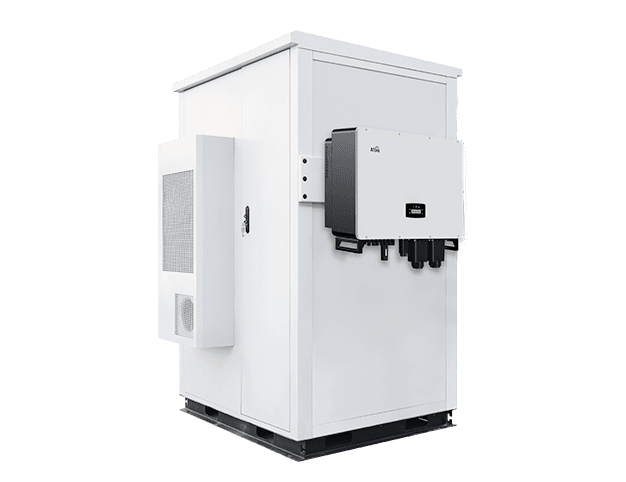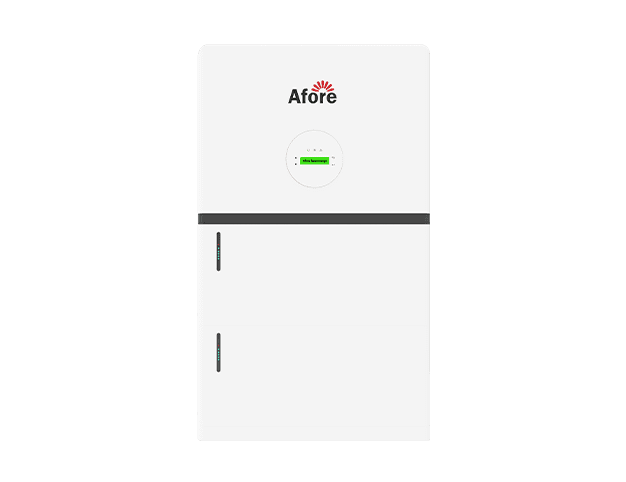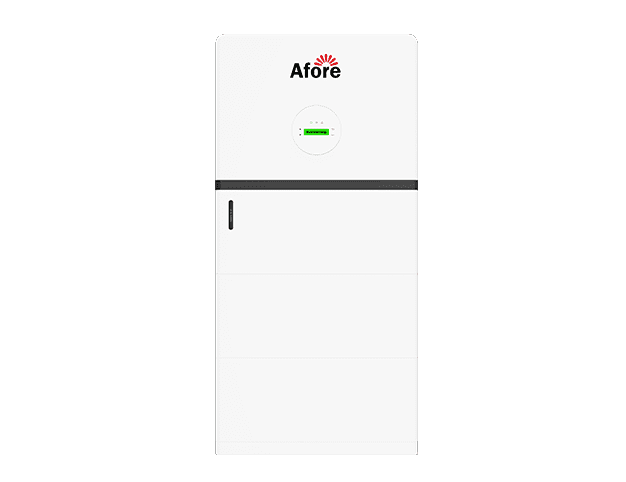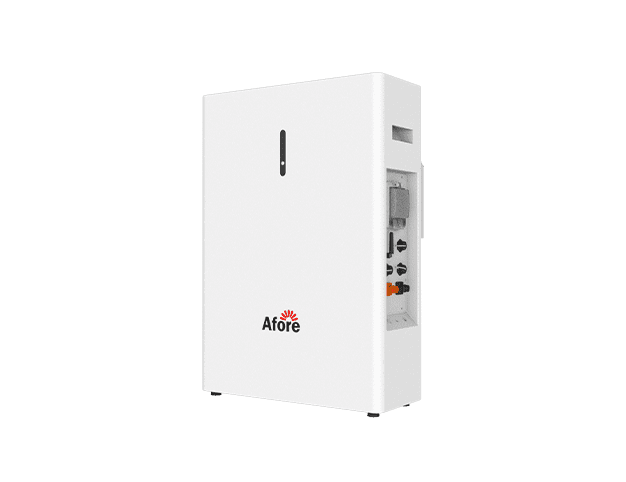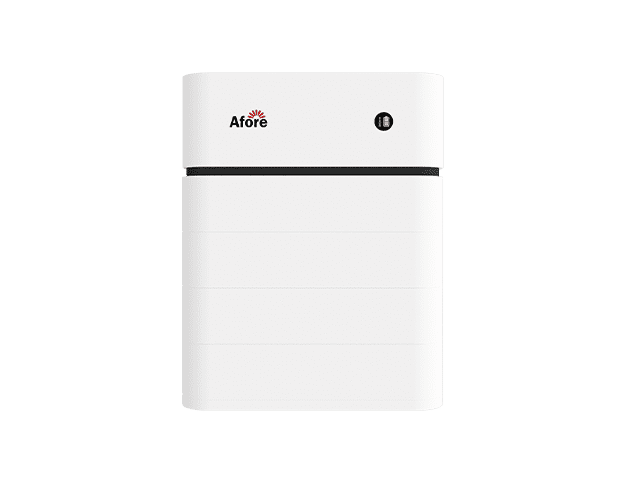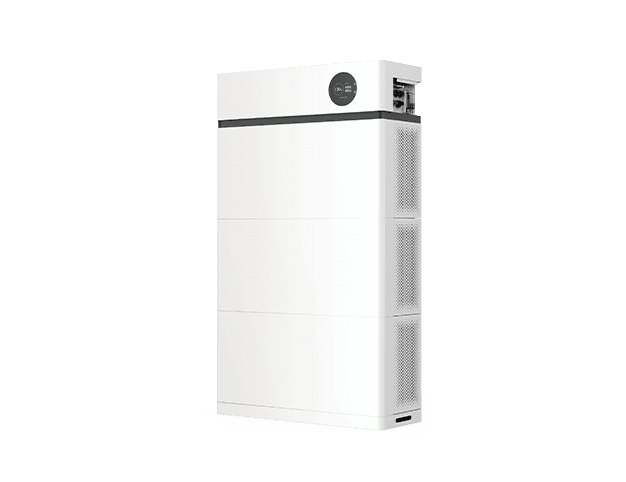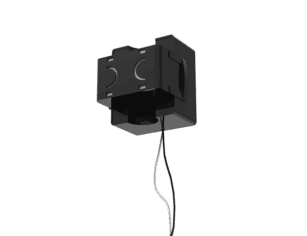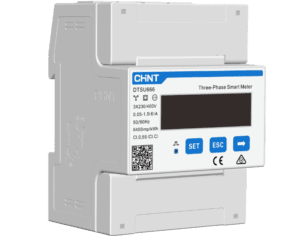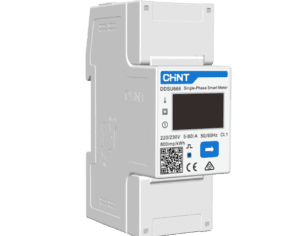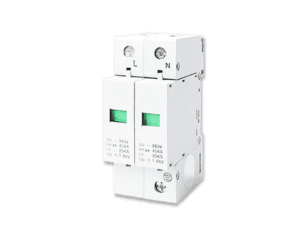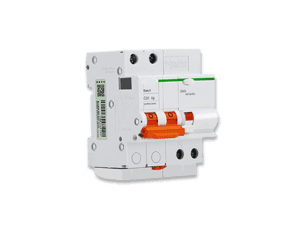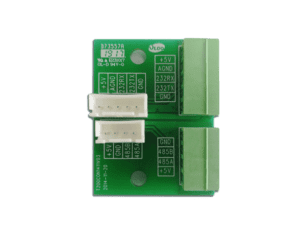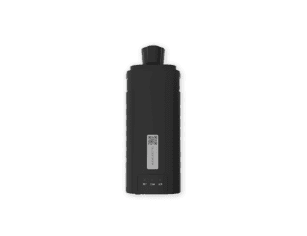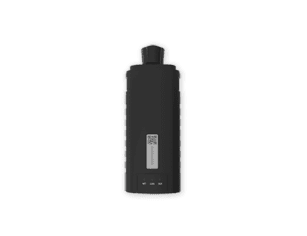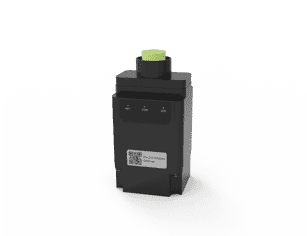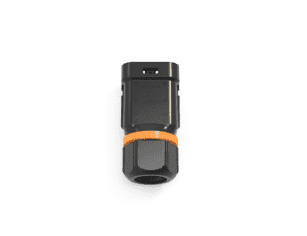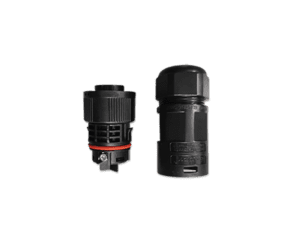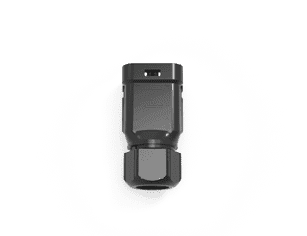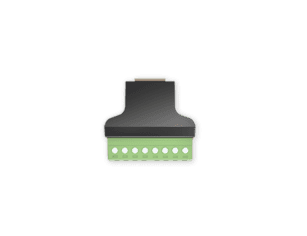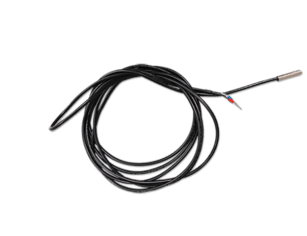¿Qué puede hacer funcionar un inversor de 750 vatios? Guía completa para un uso inteligente de la energía
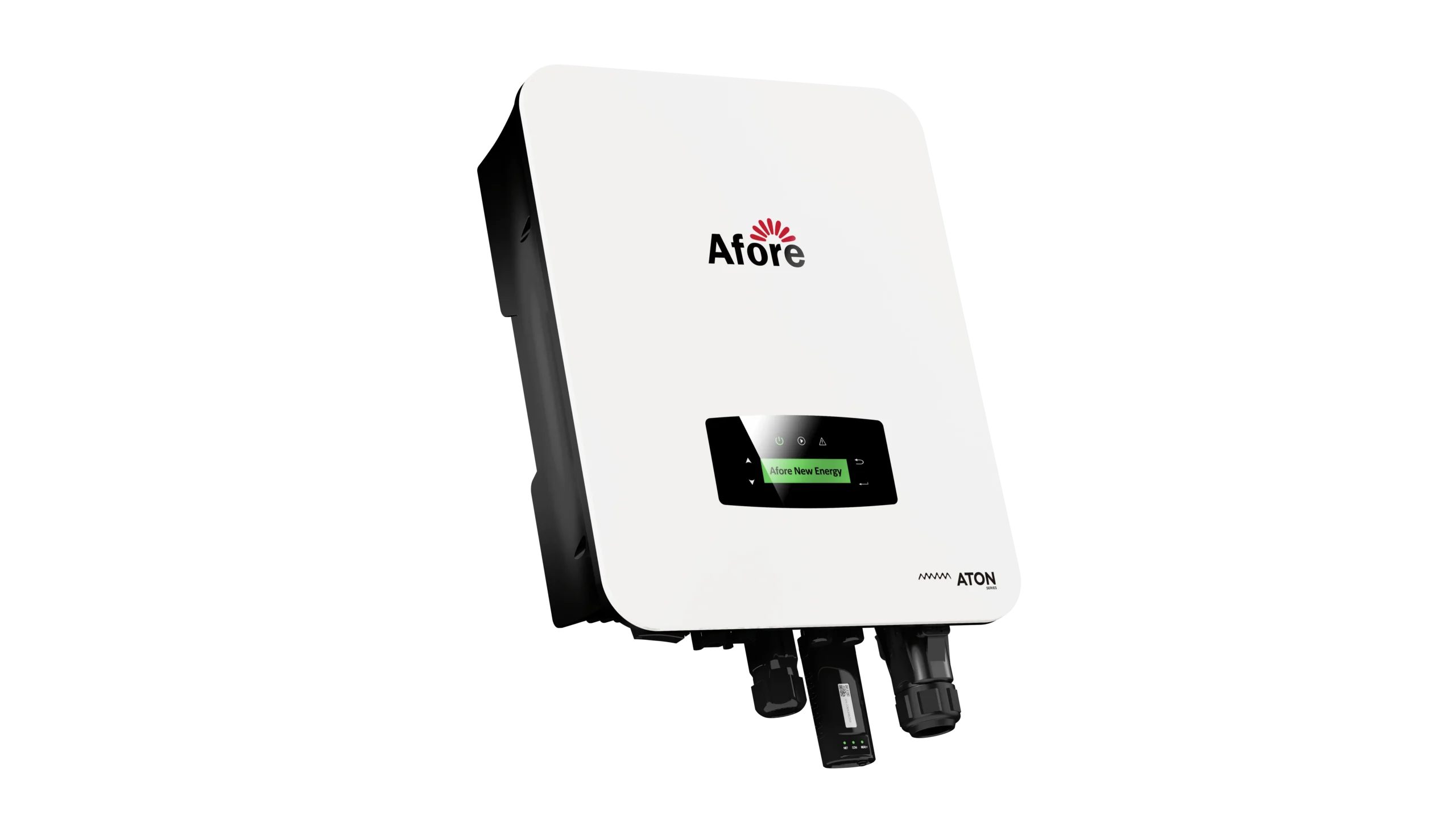
Índice
Cuando se trata de la vida fuera de la red, la vida van, viajes RV, o configuraciones de copia de seguridad de emergencia, una de las preguntas más comunes que la gente pregunta es: ¿Para qué sirve un inversor de 750 vatios? Si se ha hecho esta pregunta, está en el lugar adecuado. En esta completa guía, le explicaremos todo lo que necesita saber sobre el inversor de 750 vatios: qué puede alimentar, cuánto dura, qué no debe conectarse a él y cuándo puede ser el momento de considerar una opción mayor.
Tanto si está comparando una fuente de alimentación de 750 vatios con un inversor de 750 vatios, como si está intentando alimentar su máquina CPAP en una caravana o simplemente quiere pasar cómodamente un apagón, esta guía lo explica todo en términos sencillos y humanos, sin necesidad de tener un título de ingeniería eléctrica.
Conceptos básicos de un inversor de 750 vatios
¿Qué es un inversor de 750 vatios?
750 vatios inversor es un dispositivo que convierte la corriente continua (normalmente de una batería de 12 V) en corriente alterna, la que utilizan la mayoría de nuestros aparatos y dispositivos cotidianos. Ofrece una salida continua máxima de 750 vatios, suficiente para manejar una amplia variedad de aparatos pequeños y medianos.
Conviene aclarar que una fuente de alimentación de 750 vatios y un inversor de 750 vatios no son lo mismo. Una fuente de alimentación suele ser una unidad que convierte la CA en CC para aparatos electrónicos como ordenadores, mientras que un inversor hace lo contrario: convierte la CC (como la de la batería del coche) en CA.
Onda sinusoidal pura frente a onda sinusoidal modificada
Hay dos tipos principales de 750w inversores de potencia:
- Inversores de onda sinusoidal pura: Producen formas de onda limpias y suaves, ideales para componentes electrónicos sensibles.
- Inversores de onda sinusoidal modificada: Más asequibles pero menos compatibles con ciertos aparatos como microondas o equipos médicos.
Por tanto, si piensa utilizar el inversor con máquinas CPAP u ordenadores portátiles, opte por una versión de onda sinusoidal pura.
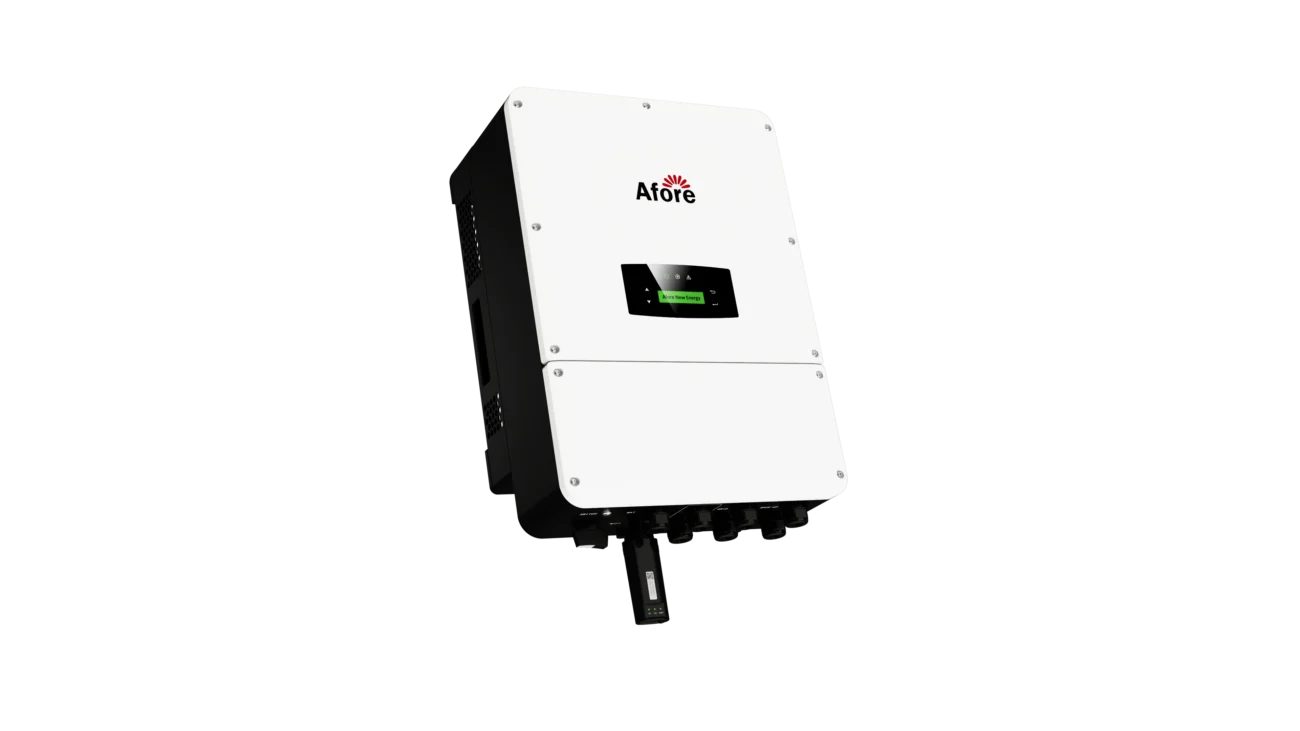
¿Qué puedo utilizar con un inversor de 750 vatios?
Un inversor de 750 vatios es uno de esos dispositivos ideales: ni demasiado grande para ser ineficaz, ni demasiado pequeño para ser limitante. Tanto si vive en una furgoneta como si se prepara para un apagón o simplemente necesita convertir CC en CA sobre la marcha, un inversor de 750 vatios ofrece una sólida combinación de portabilidad y rendimiento práctico. Pero, ¿qué puede utilizar exactamente?
Veamos qué puede manejar realmente un inversor de 750 vatios, cómo gestionar su potencia de forma inteligente y qué debe evitar conectar a él. Conocer estos límites le ayudará a utilizarlo de forma eficiente y segura, y le permitirá sacar el máximo partido a su instalación.
Esenciales cotidianos que puede alimentar
Una de las mayores ventajas de utilizar un inversor de 750 vatios es su capacidad para hacer funcionar una gran variedad de aparatos domésticos y electrónicos pequeños y medianos. Aquí tienes una lista rápida de los tipos de electrodomésticos y aparatos que puedes utilizar cómodamente sin sobrecargarlo:
- Portátiles y tabletas (30-90 vatios): Tanto si trabajas a distancia como si quieres ver una película en streaming, un inversor de 750 vatios puede con uno o dos portátiles.
- Televisores LED (hasta 32″) (60-100 vatios): ¿Quieres seguir el partido o ver una serie en tu autocaravana? No hay problema.
- Smartphones y dispositivos USB (5-20 vatios): Carga varios teléfonos o tabletas con espacio de sobra.
- Ventiladores portátiles (40-75 vatios): Mantén el aire en movimiento durante las acampadas veraniegas o las noches cálidas en caso de apagón.
- Sistemas de iluminación LED (10-50 vatios por luz): Ilumine su espacio sin mermar su presupuesto de energía.
- Routers y módems de Internet (15-30 vatios): Mantente en línea aunque se caiga la red eléctrica.
- Máquinas CPAP (30-60 vatios): Crucial para las personas con apnea del sueño: muchos usuarios de CPAP dependen de los inversores durante los viajes o los apagones.
¿La regla de oro? Comprueba siempre la potencia nominal de cada aparato antes de enchufarlo. Que "parezca" de baja potencia no significa que no tenga una elevada sobretensión de arranque.
Cuidado con las subidas de las startups
Hablando de sobretensiones, muchos dispositivos, especialmente los que tienen compresores o motores, consumen mucha más potencia cuando se encienden por primera vez que cuando funcionan de forma constante. Este pico momentáneo se conoce como sobretensión de arranque, y es una de las principales razones por las que los inversores fallan o se dañan.
Un inversor de 750 vatios suele tener una capacidad de sobretensión de unos 1.500 vatios, aunque varía según el modelo. Esto significa que puede soportar picos breves, siempre que no duren demasiado o se produzcan simultáneamente en varios dispositivos.
Por ejemplo, algunos televisores LED u ordenadores portátiles antiguos pueden alcanzar momentáneamente los 120-150 vatios antes de estabilizarse. Si alimentas varios de ellos a la vez, alcanzarás el límite de sobretensión con bastante rapidez.
Herramientas y pequeños electrodomésticos útiles
Te sorprenderá saber que algunas herramientas ligeras y pequeños electrodomésticos están dentro de su alcance:
- Cargadores de baterías para herramientas inalámbricas (70-150 vatios)
- Afeitadoras eléctricas o cargadores de cepillos de dientes (5-20 vatios)
- Licuadoras o batidoras de bajo consumo (300-500 vatios)
- Cafeteras pequeñas (sin placa calefactora) (600-700 vatios)
Todos ellos pueden utilizarse con un inversor de 750 W, sobre todo de uno en uno. Eso sí, ten cuidado de no combinar varios aparatos de carga media a la vez; por ejemplo, si utilizas a la vez una batidora y una cafetera, es probable que llegues al límite.
Ideal para autocaravanas, furgonetas y aventuras sin conexión a la red eléctrica
Un inversor de 750 vatios brilla en vehículos recreativos, autocaravanas y configuraciones móviles en las que el espacio y la eficiencia energética son importantes. Para nómadas digitales o aventureros de fin de semana, este rango de potencia le permite mantener lo esencial en funcionamiento sin tener que cargar con un enorme generador ni agotar la batería en un santiamén.
Con una fuente de alimentación de 750 vatios del tamaño adecuado, puedes montar una oficina móvil con un portátil, un router Wi-Fi y luces LED, todo simultáneamente. Es suficiente energía para vivir cómodamente sin conexión a la red cuando tus necesidades son modestas pero esenciales.
Combine el uso inteligente con la conciencia energética
Aunque la lista de lo que puede hacer funcionar un inversor de 750 W es impresionante, todo se reduce a la gestión de la energía. No puede enchufar todo a la vez y esperar que funcione a la perfección. Tenga en cuenta estas prácticas recomendadas:
- Utiliza un contador de vatios para controlar el consumo de energía en tiempo real.
- Escalona el uso para que los dispositivos no consuman energía al mismo tiempo.
- Evite las "cargas fantasma": dispositivos que consumen energía incluso cuando están apagados.
- Dé prioridad a los equipos críticos, como los dispositivos médicos, frente a los aparatos de lujo.
Si utilizas una batería, también es importante que calcules la duración de la energía. Por ejemplo, una batería de 100 Ah y 12 V proporciona unos 1.200 vatios-hora. Si un aparato de 600 vatios funciona continuamente, se agotará en sólo dos horas. La capacidad de la batería es tan importante como el tamaño del inversor.
Si sabe exactamente qué puede utilizar con un inversor de 750 vatios, podrá tomar decisiones más inteligentes y seguras para sus necesidades energéticas. Es una solución potente y eficiente cuando se utiliza dentro de su alcance, y se ha ganado su lugar en hogares, campistas y kits de emergencia de todo el mundo.
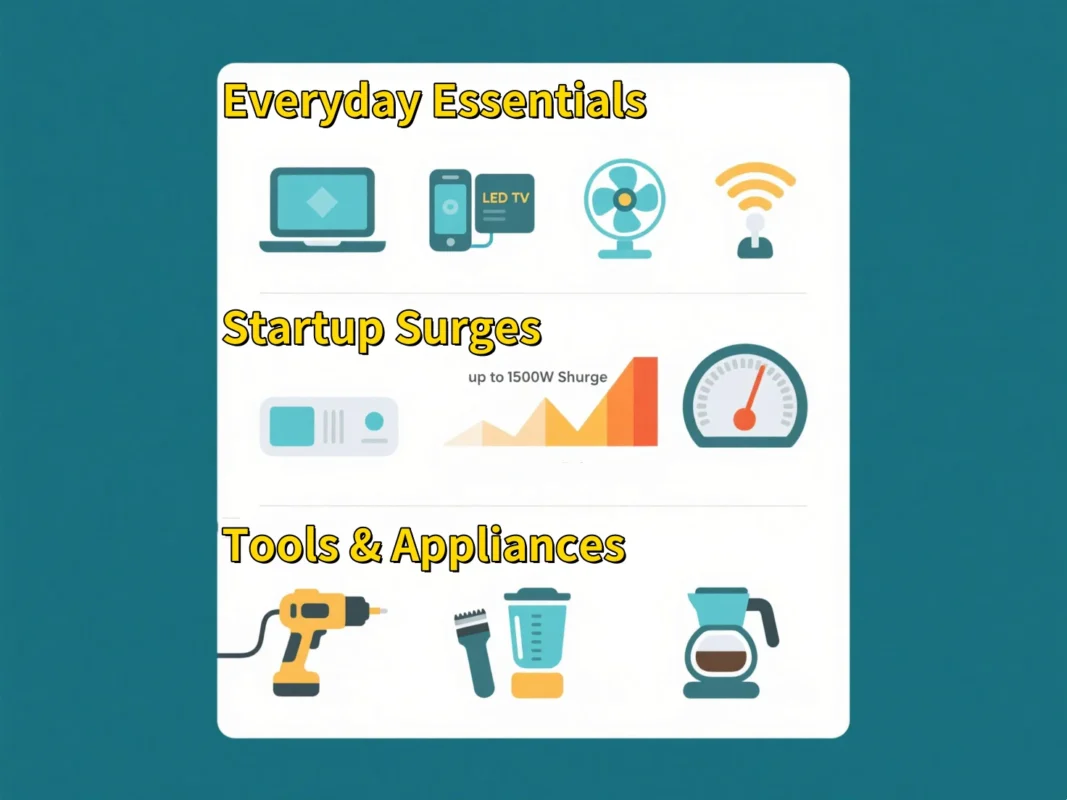
¿Cuánto dura un inversor de 750 vatios?
Una pregunta que suele surgir cuando se empieza a utilizar un inversor de 750 vatios es: ¿cuánto durará? La respuesta no es única, ya que la duración del inversor depende de varios factores clave, sobre todo del tamaño de la batería, el tipo de carga y la eficiencia del sistema.
Vamos a desglosarlo para que pueda hacerse una idea realista de lo que puede esperar cuando alimente sus dispositivos con un inversor de 750 vatios, tanto si utiliza una sola batería de 12 V, una instalación marina de ciclo profundo o incluso bancos de baterías cargadas con energía solar.
El tamaño de la batería importa, y no sólo los amperios hora
Cuando la gente dice: "Tengo una batería de 100 Ah, ¿cuánto durará mi inversor?", no es del todo cierto. El inversor de 750 vatios obtiene su energía de la batería, y la autonomía depende de los vatios-hora disponibles, no sólo de los amperios-hora.
Esta es la fórmula básica:
Capacidad de la batería (Ah) × Tensión de la batería (V) = Vatios-hora (Wh)
Así, por ejemplo, una batería de ciclo profundo de 12 V y 100 Ah completamente cargada te da:
100Ah × 12V = 1.200 vatios-hora (Wh)
Ahora, si estás ejecutando una carga de 750 vatios de forma continua:
1.200 Wh ÷ 750 W = 1,6 horas de autonomía (teórica)
Pero aquí está el truco: esto es ideal y no tiene en cuenta:
- Ineficiencia del inversor (normalmente ~85-90%)
- Límites de profundidad de descarga (especialmente si utilizas baterías de plomo-ácido).
- Edad de la batería y condiciones de temperatura
- Cargas irregulares (como una batidora o un microondas)
Teniendo en cuenta todo esto, tu fuente de alimentación de 750 vatios sólo podría alimentar una carga de 750 vatios durante unas 1-1,3 horas con esa misma batería.
Escenarios reales: lo que puede esperar
En la vida real, es probable que no uses los 750 vatios todo el tiempo. Por ejemplo, supongamos que utilizas varios dispositivos:
- Luces LED (40 vatios en total)
- Portátil (60 vatios)
- Mini nevera (50 vatios, sobrecarga de 120 W brevemente)
- Enrutador Wi-Fi (15 vatios)
Eso supone unos 165-180 W continuos, dependiendo del ciclo del compresor del frigorífico.
Ahora tu batería de 100Ah 12V podría durar:
1.200Wh ÷ 180W ≈ 6,6 horas (en realidad, más cerca de 5-6 horas)
Aquí es donde brilla el inversor de 750 W, no necesariamente en situaciones de alto consumo, sino en casos de uso moderado con varios dispositivos. Puedes alimentar los dispositivos esenciales durante horas sin estresar el sistema ni agotar la batería demasiado rápido.
¿Y si funciona con la batería del coche?
Muchos usuarios se preguntan si pueden enchufar su inversor de 750 vatios a la batería de 12 V de su vehículo y listo. Técnicamente, sí, pero sólo durante periodos cortos y con el motor en marcha.
He aquí por qué:
- Una batería de coche típica está diseñada para el arranque, no para ciclos profundos.
- La mayoría de las baterías de coche ofrecen alrededor de 50-70Ah, y sólo una parte de esa cantidad es utilizable sin dañar la batería.
- Si utilizas una carga completa de 750 vatios, aunque sea durante 30-40 minutos, es posible que después no puedas arrancar el coche.
Así que, a menos que utilices una batería de ciclo profundo específica o que el motor esté al ralentí para recargarse constantemente, no es el plan más seguro ni eficiente a largo plazo.
Sobrecarga frente a carga continua: por qué afecta a la duración
Aunque sólo alimente unos pocos aparatos, tenga en cuenta que las sobretensiones de arranque pueden disparar momentáneamente el consumo del inversor. Un frigorífico pequeño puede consumir solo 70 vatios una vez en funcionamiento, pero el consumo de arranque puede alcanzar brevemente los 300-400 vatios.
Este pico momentáneo no matará a su inversor, pero puede afectar a la duración total de su inversor de 750 vatios, porque esos picos extraen más corriente de la batería.
Emparejar el inversor con una fuente de alimentación inteligente de 750 vatios o un monitor de batería puede ayudarle a controlar el consumo instantáneo y medio de energía, clave para maximizar el tiempo de funcionamiento.
¿Se puede prolongar el tiempo de ejecución?
Por supuesto. Aquí tienes algunas formas de exprimir más tu instalación de inversor:
- Utilizar aparatos de alta eficiencia (LED en lugar de incandescentes, por ejemplo).
- Añade más capacidad a la batería (conecta varias baterías de 12 V en paralelo)
- Utiliza baterías de litio, que ofrecen descargas más profundas y más energía utilizable
- Carga mediante paneles solares para recargar durante el día y ampliar tu disponibilidad de energía
Si planea vivir sin conexión a la red eléctrica, acampar o prepararse para una emergencia, la clave es crear un sistema equilibrado que se adapte a su uso. El inversor de 750 W es a menudo el corazón de este tipo de configuraciones, y funciona mejor cuando se combina con una planificación cuidadosa y la gestión de la batería.
En resumen, la autonomía de un inversor de 750 vatios depende de lo que alimente, del tamaño de su batería y de cómo lo utilice. Para configuraciones básicas con una sola batería y cargas ligeras, puede esperar varias horas de funcionamiento. Si lo lleva a su límite de 750 vatios, tendrá poco más de una hora de funcionamiento, a menos que actualice su fuente de alimentación en consecuencia.
A continuación, vamos a hablar de lo que no debe conectar a su inversor y por qué es más importante de lo que la mayoría de la gente piensa.
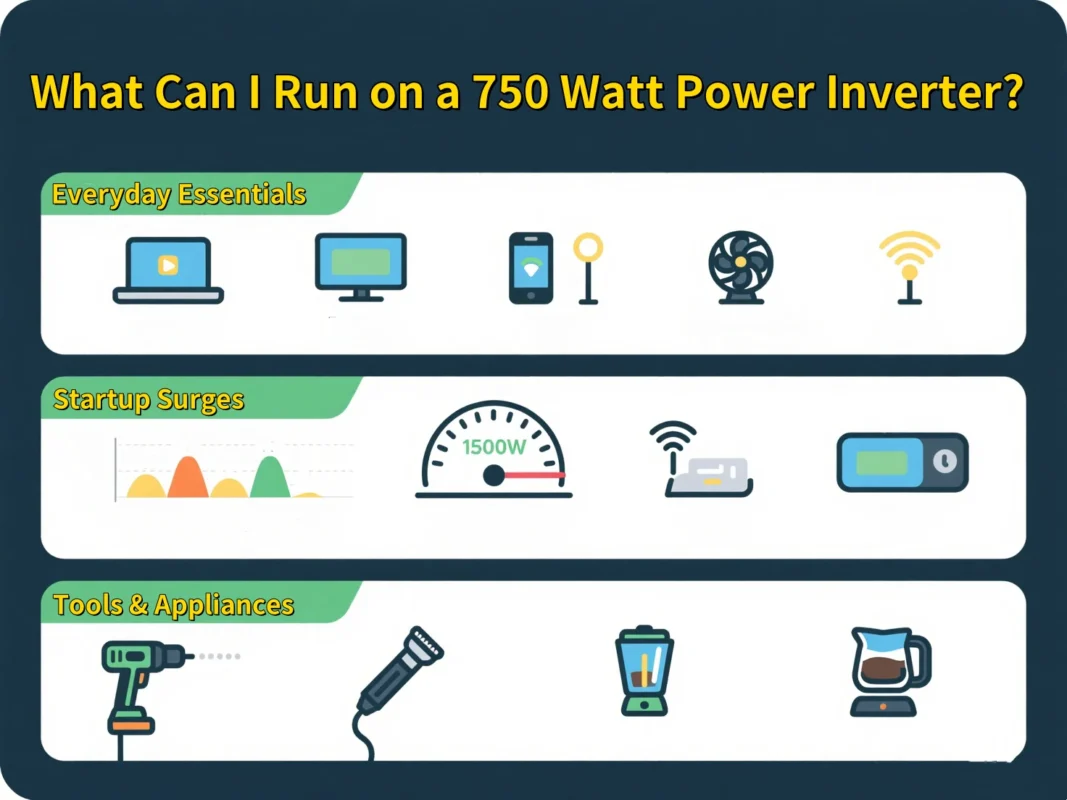
¿Qué NO debe conectar a un inversor de 750 W?
Evita los enchufes:
- Frigoríficos
- Compresores de aire
- Bombas de sumidero
- Tostadoras
- Hervidores eléctricos
Estos aparatos suelen tener picos de arranque elevados o un consumo continuo que supera la capacidad de un inversor de 750 vatios.
Además, no olvides la regla de oro: si se calienta o se enfría, probablemente consume más de 750 vatios.
¿Es suficiente un inversor de 750 vatios?
¿Qué tamaño de inversor puede funcionar en una casa?
¿Respuesta corta? No es un inversor de 750 vatios. Aunque está muy bien para pequeñas tareas y usos de reserva, para hacer funcionar una casa entera se necesita un mínimo de 3.000 vatios. Eso incluye el funcionamiento simultáneo de elementos esenciales como el frigorífico, el microondas y las luces.
Le sugerimos que dimensione su inversor en función de su potencia total en vatios más la sobrecarga 20-30%.
¿Qué tamaño de inversor necesito para el aire acondicionado?
Incluso una pequeña unidad de aire acondicionado de ventana puede necesitar entre 1.000 y 1.500 W, sobre todo al arrancar. Necesitaría al menos un inversor de 2000 W y un banco de baterías potente. De nuevo, un inversor de 750 vatios no es suficiente para las necesidades de refrigeración.
¿Cuándo se debe pasar de un inversor de 750 W?
Si se encuentra constantemente calculando su potencia en vatios, desenchufando dispositivos para hacer funcionar otros o necesitando alimentar cualquier cosa con un motor o una bobina de calefacción, es hora de actualizar.
Considere un inversor de 1000W o 1500W para:
- Microondas
- Herramientas eléctricas
- Cafeteras
O incluso hasta 3000W si planeas vivir sin conexión a la red a largo plazo o utilizar mucho la energía solar.
Inversor de 750 W frente a generador: ¿Cuál es el correcto?
Los generadores como el de 8000 vatios pueden suministrar energía a toda la casa, pero son voluminosos, ruidosos y consumen mucho combustible. En cambio, un inversor de 750 vatios ofrece las siguientes ventajas:
- Silencio
- Portátil
- Ideal para un uso limitado o a corto plazo
Elija un generador para toda la casa o como reserva a largo plazo. Elige un inversor de 750 vatios para tareas más pequeñas y silenciosas.
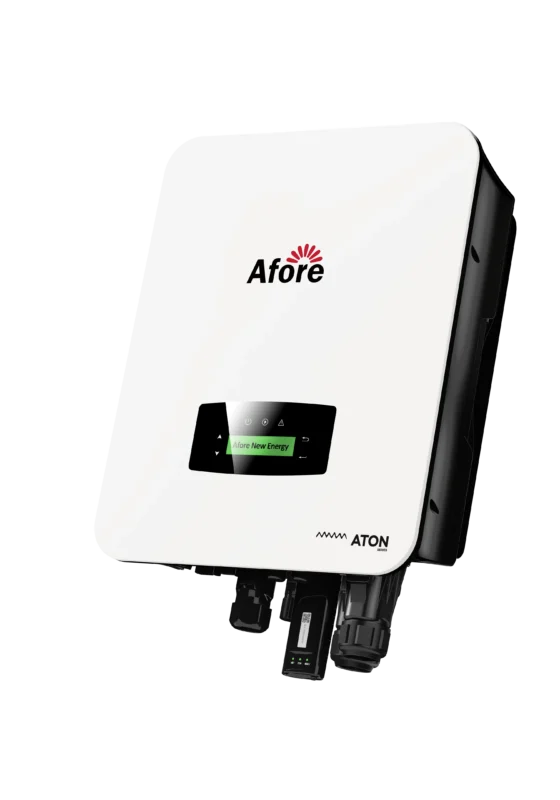
Los mejores inversores de 750 vatios
Características
- Protección contra sobrecargas
- Alarma de baja tensión
- Puertos de carga USB
- Salida de onda sinusoidal pura (para electrónica sensible)
- Ventiladores
Mejores casos de uso
- Autocaravanas y campers: Cargar teléfonos, hacer funcionar ventiladores, encender luces.
- Viajes de acampada: Mantén tus dispositivos cargados sin tener que cargar con un generador.
- Kits de emergencia: Mantente conectado e iluminado durante los apagones.
Conclusión
El inversor de 750 vatios es una pieza pequeña pero poderosa del equipo para cualquier persona que vive la vida en el camino, la preparación para emergencias, o sumergir sus dedos en la energía fuera de la red. Aunque no va a hacer funcionar la nevera o el aire acondicionado, es un equipo sólido para los aparatos electrónicos de uso diario, especialmente si se combina con la configuración de batería adecuada.
¿Todavía te preguntas qué puedo hacer funcionar con un inversor de 750 vatios? Limítese a aparatos de menos de 750 W en total, evite todo lo que tenga un motor o un elemento calefactor, y no tendrá problemas. Para una fuente de alimentación silenciosa, fiable y sin combustible, el inversor de 750 vatios cumple todos los requisitos.
Preguntas frecuentes sobre inversores de 750 vatios
¿Qué potencia tiene un inversor de 750 vatios?
Un inversor de 750 vatios puede alimentar un número sorprendente de dispositivos pequeños y medianos. Piense en portátiles, pequeños televisores LED, consolas de videojuegos, routers, máquinas CPAP, luces LED, ventiladores e incluso utensilios de cocina de bajo consumo como batidoras o pequeñas cafeteras (sin placas calientes). También puedes cargar simultáneamente smartphones, tabletas y otros aparatos alimentados por USB.
Si se pregunta "¿qué puedo hacer funcionar con un inversor de 750 vatios?" - la respuesta corta es: la mayoría de los aparatos electrónicos y electrodomésticos de bajo consumo que consuman menos de 750 vatios continuos y no requieran una gran sobretensión para arrancar.
¿Cuánto durará una batería de 12 voltios con un inversor de 800 vatios?
Aunque no está directamente relacionada con el inversor de 750 vatios, es una cuestión importante para la planificación energética. Una batería de ciclo profundo típica de 12 V y 100 Ah tiene aproximadamente 1200 vatios-hora de energía utilizable (suponiendo una eficiencia de 100%, lo que no suele ser el caso). Un inversor de 800 vatios a plena carga agotaría esa batería en aproximadamente 1,5 horas, sin tener en cuenta las pérdidas de eficiencia del inversor, que suelen ser de 85-95%.
Con un inversor de 750 vatios, si consume 750 vatios constantemente, la autonomía será similar. Sin embargo, si lo utiliza de forma intermitente o consume entre 300 y 500 vatios, la batería podría durar mucho más, hasta 3-4 horas en función de la carga.
¿Qué no debe conectarse a un inversor?
Buena pregunta, y muy importante. Nunca debe enchufar aparatos de alta carga, con sobretensión o que generen calor a un inversor de 750 vatios. Esto incluye:
- Microondas
- Secadores de pelo
- Hervidores eléctricos
- Tostadoras
- Calefactores
- Frigoríficos de tamaño normal
- Herramientas eléctricas como sierras circulares
Estos dispositivos no sólo superan el límite de 750 vatios de la fuente de alimentación, sino que también pueden producir una elevada sobretensión que podría dañar su inversor. Aunque su potencia nominal parezca aceptable, su consumo de arranque puede disparar o sobrecalentar la unidad.
¿Qué tamaño de inversor puede hacer funcionar una casa?
Si quiere hacer funcionar toda una casa -incluidos frigoríficos, bombas de pozo, sistemas de calefacción, ventilación y aire acondicionado, y otros aparatos- necesitará mucho más que un inversor de 750 vatios. Para aplicaciones domésticas completas, generalmente se necesitan inversores de 3000 a 8000 vatios o más, dependiendo de la configuración y de los aparatos que desee utilizar.
Un inversor de 750 vatios puede funcionar como sistema suplementario o de reserva para dispositivos críticos -iluminación, comunicaciones y electrónica básica-, pero no cubrirá el aire acondicionado central ni los grandes electrodomésticos.
¿Qué tamaño de inversor necesito para funcionar con CA?
La mayoría de los aparatos de aire acondicionado -incluso los pequeños portátiles- necesitan al menos entre 1.500 y 3.000 vatios para funcionar, y las sobretensiones de arranque suelen ser mucho mayores. Un inversor de 750 vatios simplemente no tiene capacidad para hacer funcionar unidades de CA estándar.
Hay algunas excepciones: algunas unidades de CA ultraeficientes de 5.000 BTU diseñadas para vehículos recreativos o uso fuera de la red pueden funcionar con un inversor de 1.000 a 1.500 vatios, pero de nuevo, 750 vatios no son suficientes para las cargas típicas de CA.
¿Puedo utilizar un inversor de 750 vatios en mi caravana o autocaravana?
Por supuesto. De hecho, los inversores de 750 vatios son los preferidos de los autocaravanistas y furgoneteros para aplicaciones ligeras. Puede utilizar uno para alimentar su televisor, cargar portátiles y teléfonos, hacer funcionar ventiladores, iluminación LED e incluso utilizar una pequeña batidora para hacer batidos o smoothies. Sólo tienes que vigilar los niveles de batería y el consumo de energía.
En las grandes plataformas aisladas, la gente suele combinar un inversor de 750 vatios con una instalación solar y varias baterías para ampliar el tiempo de funcionamiento y cubrir las cargas esenciales.
¿Es seguro un inversor de 750 vatios para las máquinas CPAP?
Sí, en la mayoría de los casos, un inversor de 750 vatios proporciona potencia más que suficiente para las máquinas CPAP, que suelen consumir entre 30 y 60 vatios. Sin embargo, si su máquina tiene un humidificador térmico, la potencia podría superar los 100 vatios. Aún así, está dentro del rango de funcionamiento de una fuente de alimentación de 750 vatios.
Asegúrese de utilizar un inversor de onda sinusoidal pura para equipos médicos. Los inversores de onda sinusoidal modificada pueden causar problemas o reducir la eficiencia de la máquina.
¿Puedo utilizar un inversor de 750 vatios con paneles solares?
Sin duda. Un inversor de 750 vatios es ideal para sistemas de energía solar a pequeña escala, especialmente en caravanas, cabañas o kits de emergencia. Si tu instalación solar incluye un banco de baterías y un regulador de carga, podrás encender luces, cargar aparatos electrónicos y alimentar pequeños electrodomésticos de forma eficiente.
Asegúrese de que su inversor de 750 W está conectado a una batería con suficiente capacidad de amperios-hora. Para instalaciones solares, un banco de baterías de 100Ah o 200Ah suele ser ideal para este tamaño de inversor.
¿Un inversor de 750 vatios puede hacer funcionar un mini frigorífico?
Depende. Algunos mini frigoríficos compactos, especialmente los fabricados para dormitorios o vehículos recreativos, consumen menos de 100 vatios en funcionamiento, pero pueden tener una sobretensión de arranque de 600-1.000 vatios. Si su inversor de 750 vatios tiene una capacidad de sobretensión de más de 1.500 vatios, podría soportarlo. De lo contrario, podría apagarse o desconectarse.
Comprueba la etiqueta del fabricante del frigorífico y sé precavido. Es más seguro utilizar mini frigoríficos con inversores de 1.000 vatios o más para hacer frente a las sobretensiones de arranque.
¿Puedo cargar baterías de herramientas eléctricas con un inversor de 750 W?
Sí, siempre que el cargador no supere la capacidad del inversor. La mayoría de los cargadores de herramientas inalámbricas consumen entre 70 y 150 vatios, lo que está dentro del rango. Eso sí, no cargues varias herramientas a la vez a menos que el consumo combinado sea inferior a 750 vatios.
Esto hace que un inversor de 750 vatios resulte práctico para trabajos in situ o proyectos de bricolaje remotos, especialmente si se combina con una batería portátil o una estación de carga solar.




